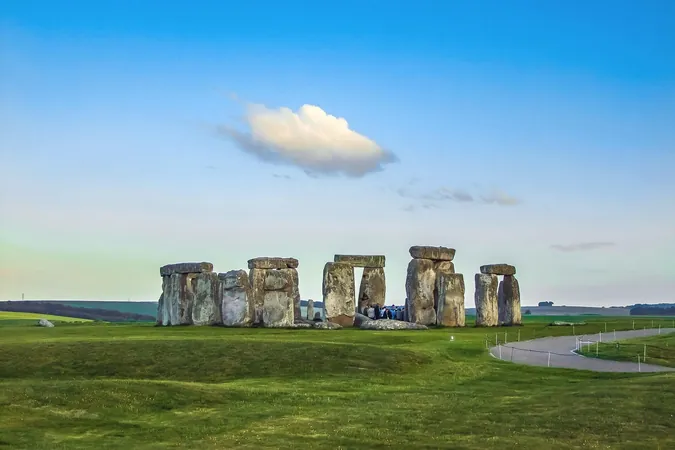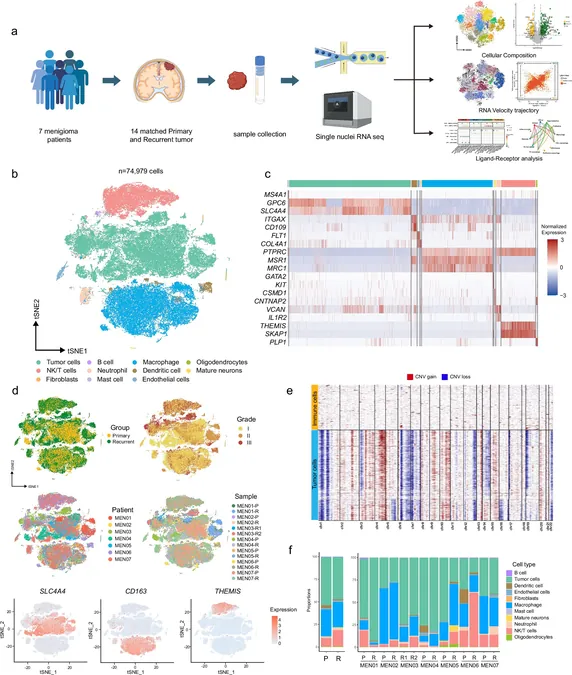
Ancient Cow Tooth Unveils Wales’ Role in Stonehenge’s Mystique!
2025-08-25
Author: John Tan
Discovering Prehistoric Links to Stonehenge
A remarkable find at Stonehenge has turned the spotlight on Wales, with a prehistoric cow tooth tracing the origins of the iconic stone circle back to the Neolithic era. Researchers from UCL have unveiled this groundbreaking evidence that promises to reshape our understanding of Stonehenge's construction.
The Jawbone Revelation
Published in the Journal of Archaeological Science, the study analyzed a cow's jawbone excavated in 1924 near Stonehenge’s south entrance. Through advanced isotope analysis of one of the molars, researchers dated it to approximately 2995 to 2900 BCE—right around the time the monument began to take shape, suggesting a strong connection to Welsh origins.
Cows: The Silent Heroes of Stonehenge?!
This astonishing discovery marks the first scientific evidence linking Stonehenge cattle remains to Wales, bolstering theories that these animals played a pivotal role in transporting the massive bluestones from their homeland across the landscape. Previous studies have already confirmed that the bluestones themselves originated in Wales.
A Slice of History: The Isotope Analysis Breakdown
In a fascinating examination, the scientists meticulously sliced the cow’s third molar into nine horizontal sections. By analyzing carbon, oxygen, strontium, and lead isotopes, they could unlock secrets about the cow's life, diet, and possibly migratory patterns. For instance, oxygen isotopes reflected seasonal growth, while carbon isotopes indicated it feasted on woodland supplies in the winter and open pastures come summer.
Enduring Echoes of a Forgotten Past
The isotopic data hinted at a seasonal shift in feeding sources from various geological regions, raising questions about whether the cow moved across environments or if its winter food was transported from afar. Striking spikes in lead isotopes during the late winter suggested origins from much older geological formations, particularly around the Preseli hills of Pembrokeshire, where the bluestones hail.
Unraveling the Mysteries of a Neolithic Life
Professor Jane Evans of BGS highlighted the remarkable insights gained into this cow's life, emphasizing that this marks the first evidence of cattle migration from Wales, along with the account of dietary shifts dating back 5,000 years. "The tale spun from this tooth is astonishing; as we advance in scientific research, there’s still much to unravel about its journey," she remarked.
A Pregnant Past: Insights into Cow’s Journey
Despite initial assumptions, the unique lead signature in the cow’s bones pointed to the possibility that the animal was female and either pregnant or nursing during the time the tooth formed. To corroborate this theory, the team employed a peptide-based sex determination technique from the University of Manchester, showing a high probability that this cow was indeed female.
A New Perspective on Stonehenge’s Story
Richard Madgwick from Cardiff University praised the research, declaring it a pivotal framework for understanding the life of this mysterious cow, whose remains were left at an entrance to Stonehenge. "This nuanced exploration into the story of a single animal offers a fresh perspective on this monumental archaeological site, highlighting the intricate ties between history, culture, and nature,” he concluded.


 Brasil (PT)
Brasil (PT)
 Canada (EN)
Canada (EN)
 Chile (ES)
Chile (ES)
 Česko (CS)
Česko (CS)
 대한민국 (KO)
대한민국 (KO)
 España (ES)
España (ES)
 France (FR)
France (FR)
 Hong Kong (EN)
Hong Kong (EN)
 Italia (IT)
Italia (IT)
 日本 (JA)
日本 (JA)
 Magyarország (HU)
Magyarország (HU)
 Norge (NO)
Norge (NO)
 Polska (PL)
Polska (PL)
 Schweiz (DE)
Schweiz (DE)
 Singapore (EN)
Singapore (EN)
 Sverige (SV)
Sverige (SV)
 Suomi (FI)
Suomi (FI)
 Türkiye (TR)
Türkiye (TR)
 الإمارات العربية المتحدة (AR)
الإمارات العربية المتحدة (AR)